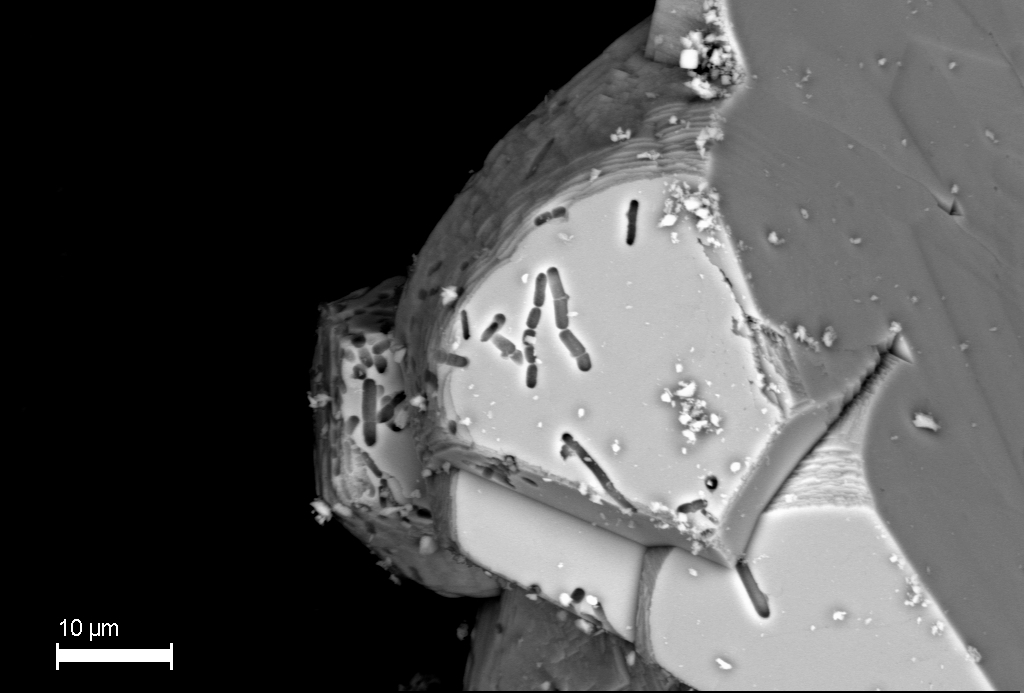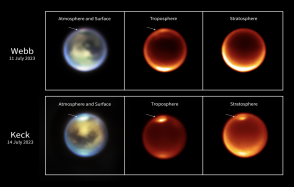The origin of these isotopic fractionations, known as vital effects, could be linked to the metabolic activity of these organisms. The aim of this study was to determine whether carbonates derived from the metabolic activity of prokaryotic microorganisms could also exhibit oxygen isotopic imbalances. This has important potential implications for the recognition of carbonates of biological origin in soils, subsoils and sediments.
The study presents the oxygen isotopic compositions of calcium carbonates formed by the metabolic activity of Sporosarcina pasteurii, a carbonatogenic soil bacterium whose metabolism produces dissolved inorganic carbon (DIC), which eventually precipitates as solid calcium carbonates in the presence of calcium.
The study shows that for oxygen, the isotopic fractionation between carbonates formed by bacteria on the one hand and water on the other (1000lnαCaCO3-H2O) is 25‰ lower than the value expected in the case of precipitation of these minerals in isotopic equilibrium with water.
To determine the origin of this isotopic fractionation, the authors took advantage of the isotopic effects of an enzyme, carbonic anhydrase, capable of accelerating oxygen isotope equilibration between CID and water. The addition of carbonic anhydrase to the microbial culture resulted in the precipitation of microbial carbonates in isotopic equilibrium with water, since the enzyme was able to equilibrate oxygen isotopes between CID and water prior to the precipitation of CID to carbonates. The imbalance in experiments without carbonic anhydrase could thus be unambiguously attributed to the existence of an isotopic imbalance between metabolically produced CID and water.
These results demonstrate for the first time that bacteria can induce precipitation of calcium carbonates in strong isotopic imbalance with water for oxygen, similar to what is observed in eukaryotes during a vital effect.
The fact that metabolic CO2 production, a common process in many carbonate-inducing microbial metabolisms, is at the origin of the imbalance, led the authors to propose that non-equilibrium isotopic fractionations caused by metabolic activity in microbial carbonates are more widespread than currently considered.
As a result, the authors recommend taking precautions when oxygen isotope compositions from bioinduced carbonates are used, particularly in diagenetic and paleoenvironmental reconstructions. In addition, these new effects would make it possible to discriminate bacterial carbonates from those produced by exclusively inorganic processes in many environments where this distinction is very difficult.
Ce travail a été en partie financé avec le support du centre de recherche sur le stockage du CO2 (IPGP, Ademe, Total, Schlumberger).
Ref : Disequilibrium δ18O values in microbial carbonates as a tracer of metabolic production of dissolved inorganic carbon. Thaler, C., Millo, C., Ader, M., Chaduteau, C., Guyot, F., & Ménez, B. (2017). Geochimica et Cosmochimica Acta, 199, 112-129.









